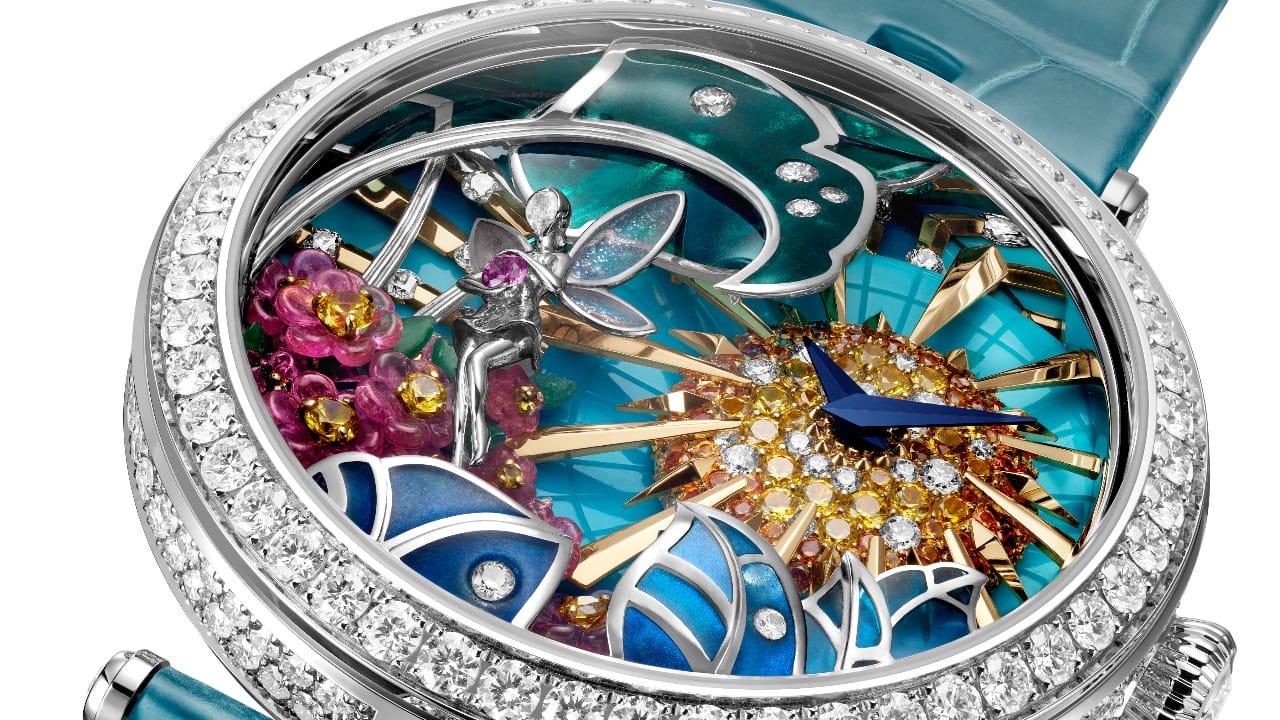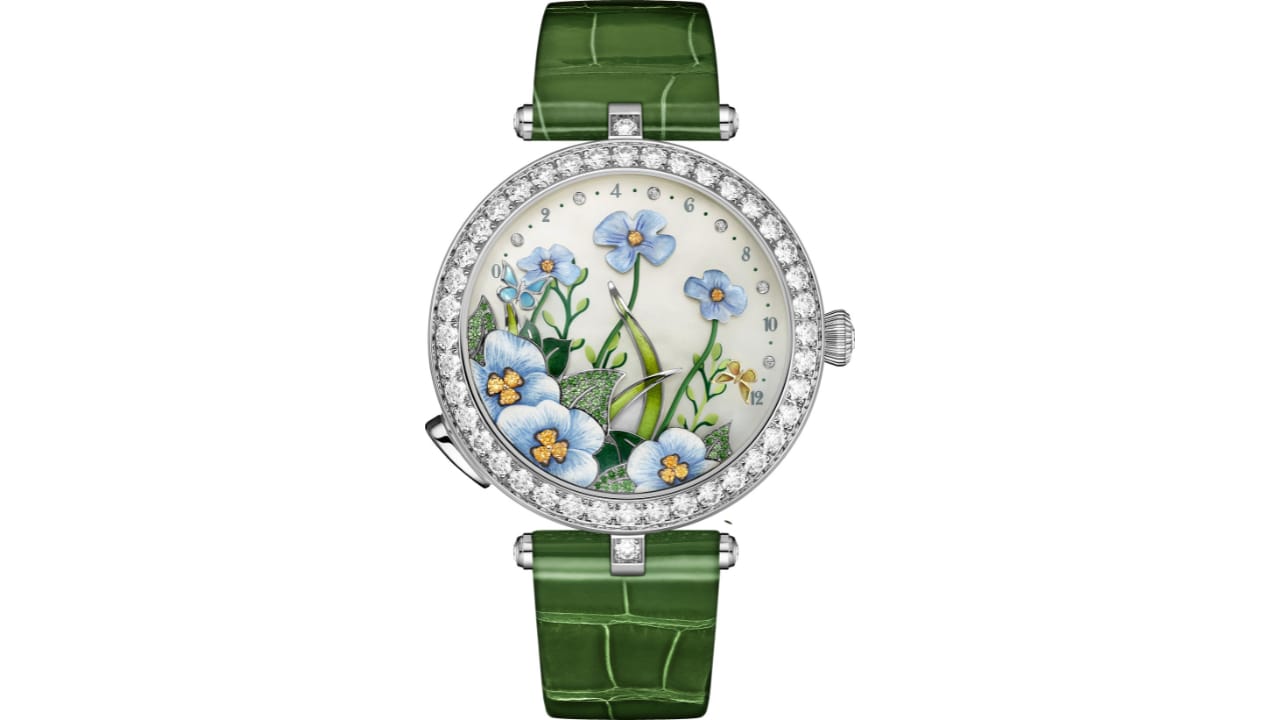Another year for Van Cleef & Arpels, and another line-up of exquisitely crafted metiers d’art wristwatches in the brand’s whimsical, romantic, fairy-tale fashion—invisibly underpinned by more than a few sophisticated technical developments. The highlights this year are a pair of 41mm watches from the Extraordinary Dials collection: the Lady Arpels Jour Enchanté, which features a delicate fairy figurine on a backdrop of flowers, leaves and a bejewelled sun; and its counterpart, the Lady Arpels Nuit Enchantée, where the fairy now rests on a bed of flowers in a crystal cave, with the night sky visible in the distance. These are an especially dazzling pair, even by the Maison’s lofty standards, with an unusual complexity to their scenes that are rendered in extraordinary three-dimensionality via gold, gems and enamel. Jour Enchanté is particularly remarkable because it makes use of three patent-pending techniques developed specifically for this watch—ones that took two years to develop.

The first of these is façonné enamel, used to create the finely sculpted pink flowerbed. It could not have been fashioned out of regular enamel because the material’s high internal tension means it is liable to break during shaping. Van Cleef & Arpels’ R&D department found a way around this: by heating the material for more than 10 hours in an oven made specially for the job, and then cooling it in a specific way that internal tension is dissipated and the material can then be sculpted.

Translucent sections of the dial, including leaves and wings, were created using the traditional plique-à-jour technique, but the diamond dewdrops on the leaves are new. For similar reasons that façonné was developed, trying to create a setting in enamel ordinarily invites cracking. But by putting the plique-à-jour material through a similar process, a hole can be created, one that is shaped to accept a diamond. This is then heated—again, in a very specific way—which allows the material to flow slightly and shape itself to the diamond. Once it is cooled—very, very slowly—the stone is then perfectly set.
Thirdly are the diamonds that are set in the gold beams of light that depict sunrays, depicting their sparkle. These make use of a ‘lifted setting’, raising the stone higher and able to catch more light—another new technique developed by the Maison.

Rainer Bernard, Van Cleef & Arpels’ Head of Research and Development for Watchmaking, explains that the house has been making enamelled watches for more than 100 years and is an important facet of the brand. “The different enamelling techniques are very important. The idea is to keep doing it, to go further—it is very important for us to be able to express different things,” Bernard says. “It’s not for the sake of innovation. It’s always the creativity, the design or the story that drives innovation. Never the other way around.”

He cites another example from one of the brand’s other new novelties, the Lady Arpels Brise d’Été watch from the Poetic Complications collection. The 38mm watch’s scene is relatively simple: a garden of leaves and flowers on stalks on a mother-of-pearl background, while a pair of butterflies trace the circumference and indicate the time while doing so. The magic is in the on-demand animation—the pusher on the side of the case will set the butterflies fluttering around the dial before returning to their indications; meanwhile, the flowers will sway as if caressed by a breeze. “If we want to create a watch where we have the idea of gardens, butterflies flying around in some way, and [flowers blown by] wind, how do you do that? We don’t know. You have to be able to start to work on elements you’ve never worked on, to step out of what you know,” Bernard explains of his team. “If you want to make a new tourbillon, there is some literature out there. But there is not one book about how to create a module that creates wind inside a watch, or a module that shows the time by flowers being open or not.
“Our handwriting is simplicity, and the most challenging and most interesting developments are for us when we do really something new,” Bernard adds. “And if we can create them using elegant engineering, in perfect symbiosis with the metiers d’art so that you see nothing from the technique, because it’s hidden behind the scenes, so you don’t see how it works, and if we get to the end and people say ‘I like that’—then this is the end of the story of a really beautiful development.”




